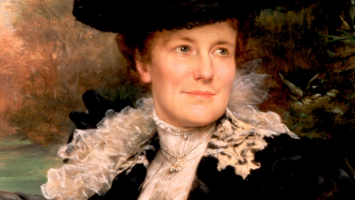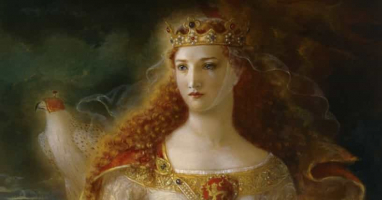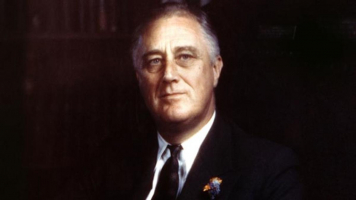Top 10 Interesting Facts about Eleanor Roosevelt
Eleanor Roosevelt, whose full name is Anna Eleanor Roosevelt, was a United Nations diplomat and humanitarian who served as first lady of the United States ... read more...(1933–45) and the wife of Franklin D. Roosevelt, the country's 32nd president. She was one of the most powerful and well-respected women in the world at the time. These incredible facts should serve as a reminder of why she is still hailed as one of America's most significant first ladies and diplomats even though her lifetime accomplishments are almost too numerous to name. Here are the ten most interesting facts about Eleanor Roosevelt you can explore!
-
First of all, one of the most interesting facts about Eleanor Roosevelt is she was orphaned at a young age. Theodore Roosevelt's 26th president of the United States, Theodore Roosevelt's niece Eleanor, was born to Elliott and Anna Hall Roosevelt. Anna Hall was a Livingston family descendant. The Livingstons, a prominent Hudson River family, contributed significantly to the establishment of the new republic. One Livingston administered George Washington's oath of office, another signed the Declaration of Independence, and a third went on to become a Supreme Court justice.
She was raised in a rich family that valued volunteer work in the community. After surgery on December 7, 1892, when Eleanor was eight years old, her mother passed away from diphtheria. Less than two years later, on August 14, 1894, Eleanor's father passed away. She was not quite ten years old at the time. Elliott Roosevelt (1889–1893) and Gracie Hall Roosevelt (1891–1941), also known as Hall, were two of Eleanor's brothers. In 1892, a few months after their mother passed away, both brothers developed scarlet fever. Elliott did not recover, although Hall did. Relatives reared her and her surviving brother. Eleanor found it extremely difficult to deal with the passing of her father, to who she had been especially close.
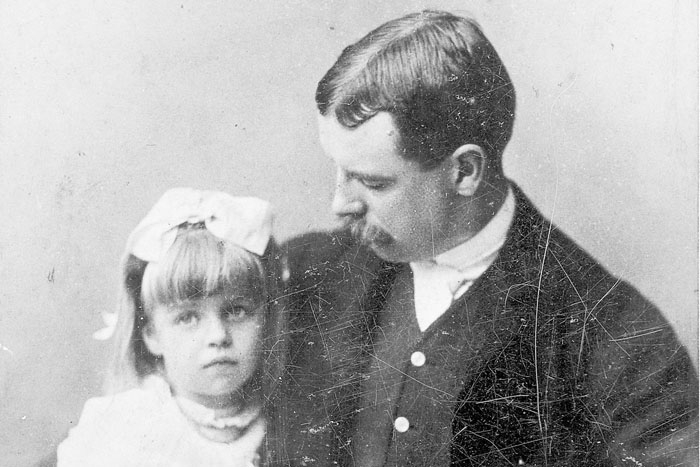
Photo: http://hotcore.info/ 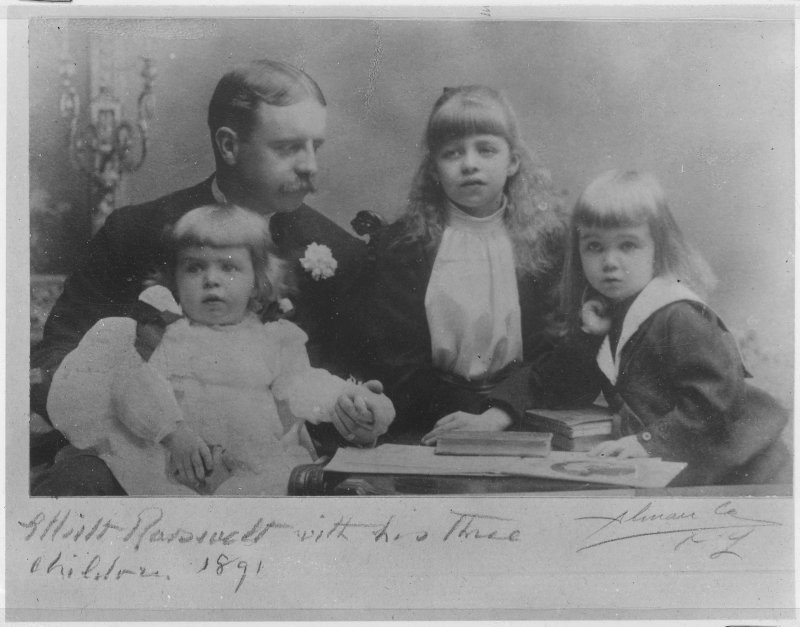
Photo: https://commons.wikimedia.org/ -
Eleanor moved to reside with her grandmother, Mrs. Valentine G. Hall, in Tivoli, New York, following the passing of her mother. Till the age of 15, she received private tutoring for her education. Eleanor began attending Allenwood, a ladies' boarding school outside of London when she was 15 years old. There, the French headmistress Marie Souvestre had an impact on Eleanor. At Allenwood, Eleanor was quite popular in addition to being very diligent, and many people think that her experience there helped her develop her confidence. Later, she claimed that Marie Souvestre was one of Eleanor's most significant role models and most influential persons.
Eleanor developed similar interests as a result of Souvestre's intellectual curiosity, her desire for adventure, and her pursuit of excellence—in everything but sports—and she later referred to her three years there as the happiest time of her life. To get ready for her "coming out" into a society that winter, she reluctantly went back to New York in the summer of 1902. She spent time volunteering in the community, including teaching in a settlement house on Manhattan's Lower East Side, as per family tradition. Even though Eleanor didn't attend college, Allenwood offered a serious university atmosphere with high academic expectations.
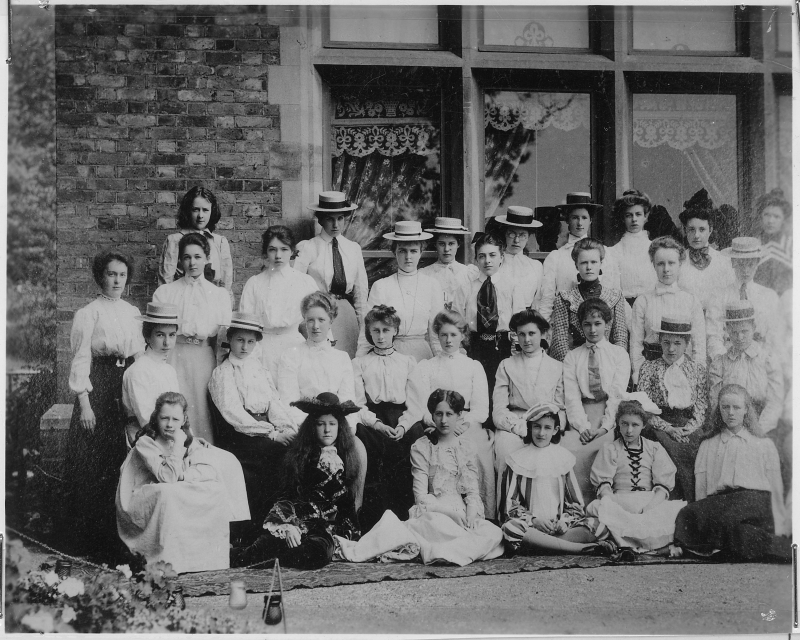
Photo: https://commons.wikimedia.org/ 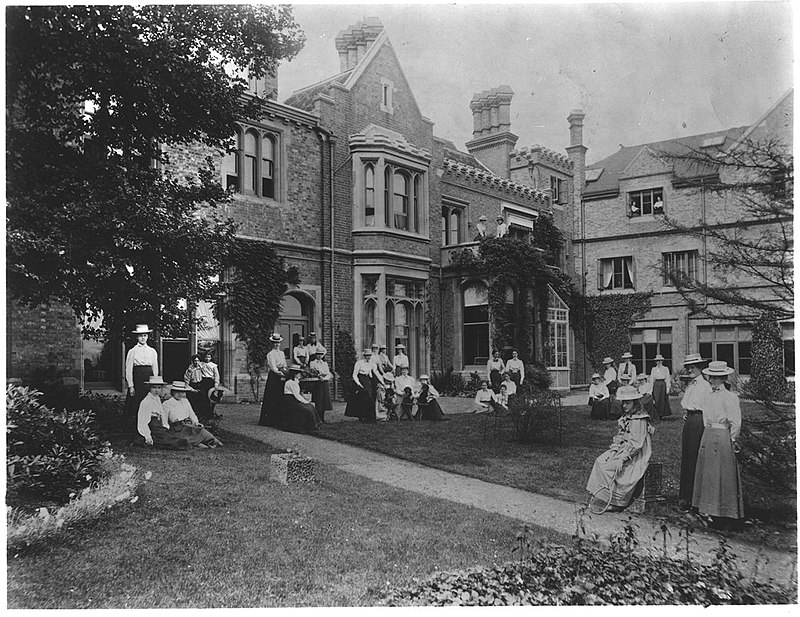
Photo: https://en.wikipedia.org/ -
Franklin Roosevelt, a distant relative of Eleanor's, started courting her soon after she arrived back in New York, and on March 17, 1905, they were wed in the Big Apple. On the day of her wedding, President Theodore Roosevelt escorted Eleanor down the aisle. TR once wrote, "I love Eleanor as much as if she were my daughter." A few months into his second administration, on March 17, 1905, the president gave Eleanor away on her wedding day. Later, TR teased her new husband (as well as his cousin), "Well, Franklin, there's nothing like keeping the name in the family." Since she was more serious than her husband and didn't share his sense of humor, she frequently remarked that he needed to find other people to share his enjoyment with. Eleanor gave birth to six children between 1906 and 1916, one of them passed from infancy.
The family relocated to Albany after Franklin was elected to the New York Senate in 1911, and Eleanor began her career as a political spouse there. Eleanor spent the following several years carrying out the social responsibilities required of an "official wife," including attending formal parties and paying social calls in other government officials' houses when Franklin was appointed assistant secretary of the navy in 1913. She generally considered these events boring, eventually describing them as "utter agony".
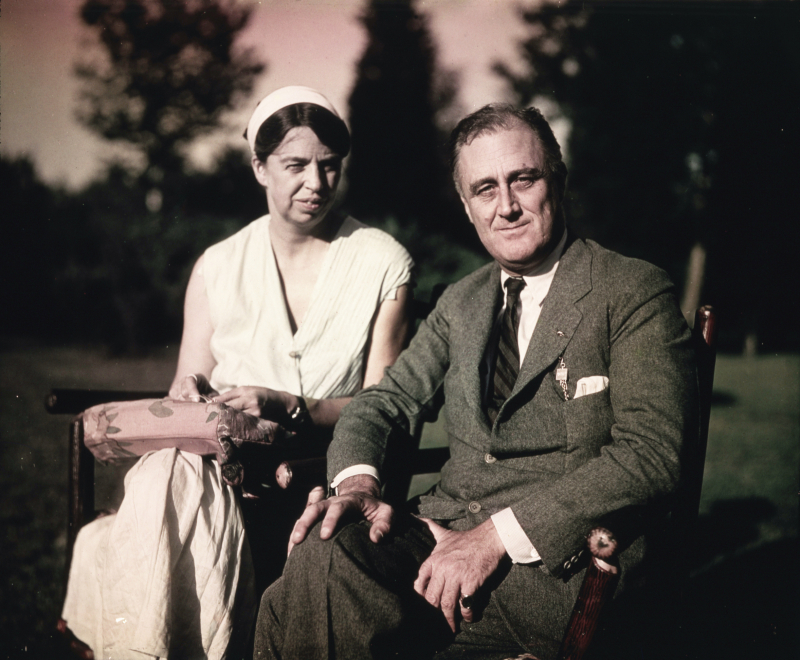
Photo: https://en.m.wikipedia.org/ 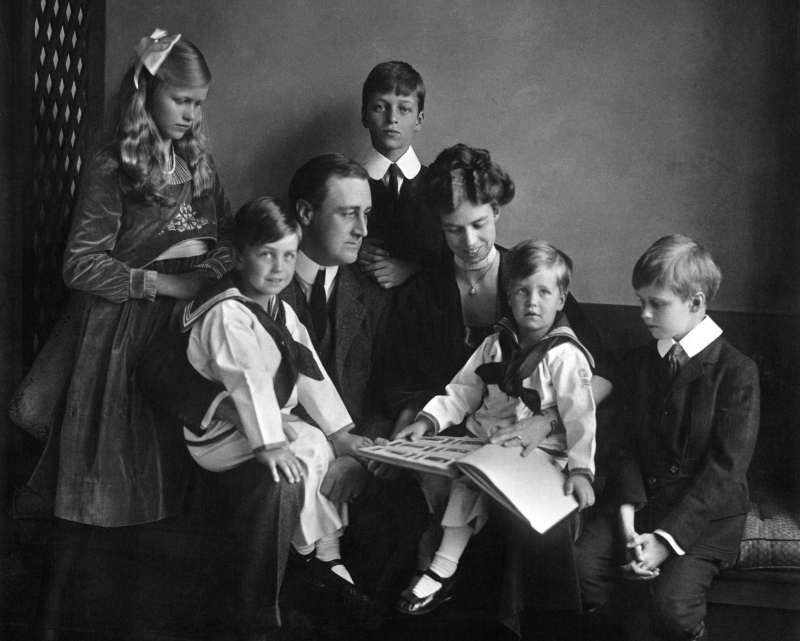
Photo: https://www.inquirer.com/ -
Eleanor learned that Franklin had been having an affair with Lucy Mercer, her social secretary, in 1918. According to what she later revealed to her friend and biographer Joseph Lash, it was one of the most horrific experiences of her life. When Eleanor discovered a packet of Lucy's letters in FDR's luggage in 1918, she discovered the affair. Despite the societal stigma that was then associated with divorce, the pair gave it some thought but ultimately decided against it for familial and financial reasons. A divorce would have ruined FDR's political career, and they both felt they wanted and needed to keep their marriage going.
The Roosevelts' subsequent emotional and sexual intimacy has been a subject of debate among historians, although most concur that their marriage remained a lasting shared partnership on many levels. They also agree that Franklin and Eleanor underwent considerable changes as a result of the romance. She purposefully broadened the range and extent of her already significant public and private activities as he got more serious personally and politically.
In 1920, Lucy wed wealthy widower Winthrop Rutherfurd, who had six kids. The marriage lasted until her husband's passing in 1944, and they produced a daughter. Despite his promise to Eleanor that he would never meet Lucy again, FDR asked her to attend his inauguration in 1933. After her husband passed away in 1944, the two started dating once more because FDR craved and needed companionship. Eleanor was upset to discover of these meetings, many of which her daughter Anna organized because she was unaware of them. Being informed that Lucy had been present when FDR passed away in Warm Springs, Georgia, in 1945 disturbed her much more. Until her passing in 1948, Lucy called Aiken, South Carolina, home.
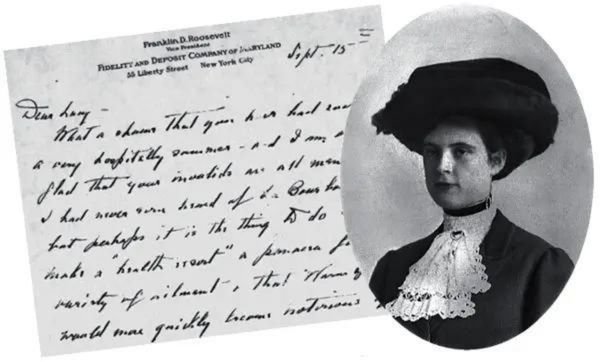
Photo: https://www.nytimes.com/ 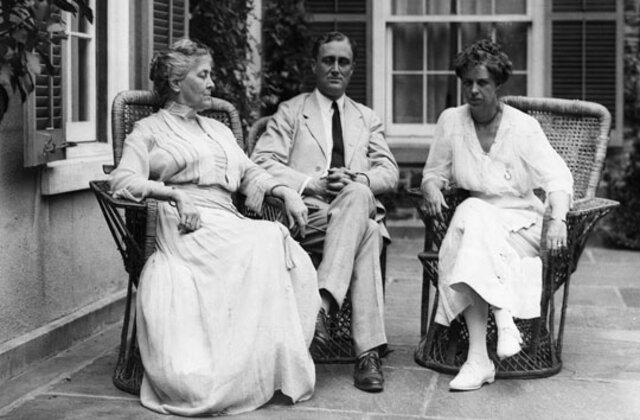
Photo: https://www.usnews.com/ -
Eleanor Roosevelt named seven individuals in a 1951 article in Look Magazine that, in her opinion, influenced her life. The first two were her mother and father, who offered her the ideal of perfection while also giving her love and assurance. She gained confidence from Allenwood School's headmistress and teacher Madame Marie Souvestre, and she learned discipline from her aunt Pussie (Mrs. W. Forbes Morgan).
However, she claimed that her husband and mother-in-characteristics law's had the biggest impact on her growth. They had an impact on how she "evolved willy-nilly into an individual." Finally, her husband's political adviser Louis Howe persuaded her to become interested in politics.
Eleanor and her mother-in-law had a complicated, dynamic relationship. Eleanor was a shy, insecure young woman seeking love and acceptance when she got engaged. When Eleanor entered their world, Sara Roosevelt already controlled it, and she continued to do so. Eleanor claimed that it was her husband's illness that forced her to take responsibility for her own life, as well as her husband's and the upbringing of her children. When Sara passed away, Eleanor described her mother-in-law as "a very important person [whose] strongest trait was loyalty to her family."
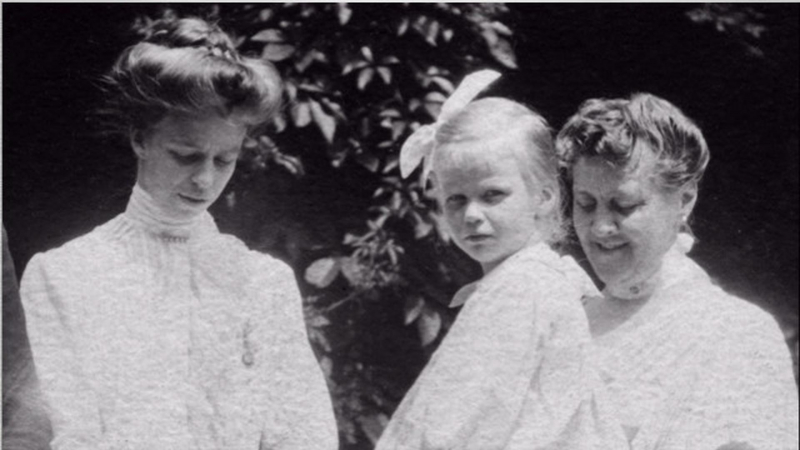
Photo: https://www.wliw.org/ 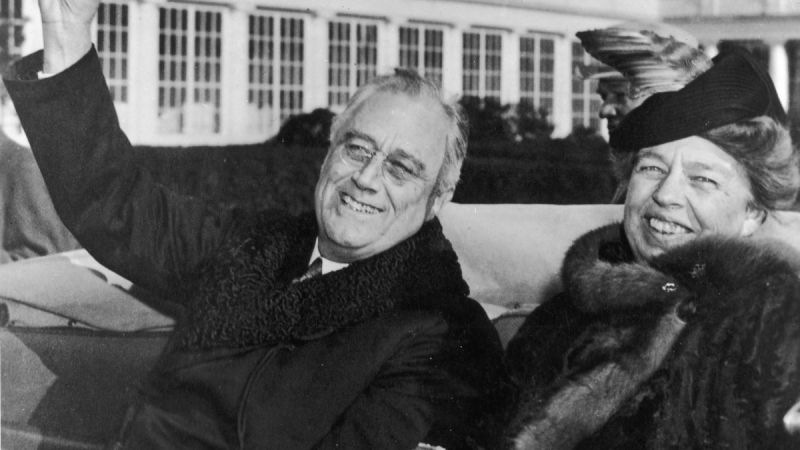
Photo: https://www.history.com/ -
Eleanor stated in her autobiography This I Remember: "I did not desire for my husband to hold the office of president. But I understood that when a man chose to serve in the public sector and was unquestionably qualified to do so, it was impossible to stop him. I was acting purely selfishly, and I never told him how I felt about it."
On the Democratic ticket, Franklin ran unsuccessfully for vice president in 1920. Eleanor's interest in politics grew at this time, in part. After all, she decided to support her husband's political career when he contracted polio in 1921 and partly because she wanted to work for significant causes. She joined the Women's Trade Union League and got involved in the Democratic Party of New York. She started reading the Congressional Record and gaining evaluation skills while serving on the League of Women Voters' Legislative Affairs Committee.
Eleanor discovered a chance to juggle the duties of a political hostess with her expanding profession and personal freedom when Franklin was elected governor of New York in 1929. She continued to commute between Albany and New York City every week while teaching at Todhunter, a ladies' school in Manhattan that she and two friends had bought.
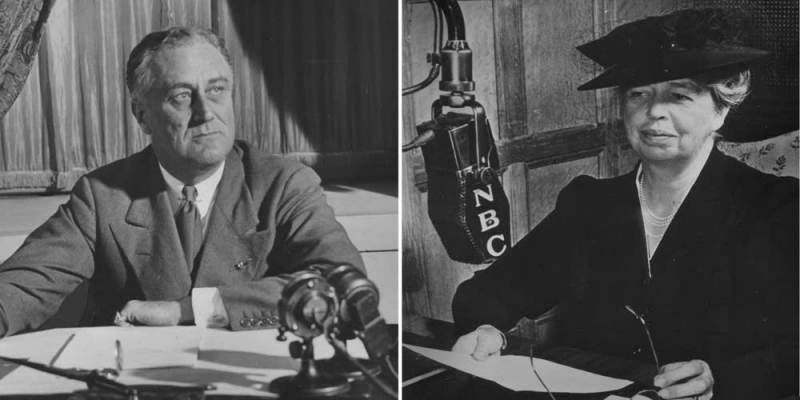
Photo: https://www.apmreports.org/ 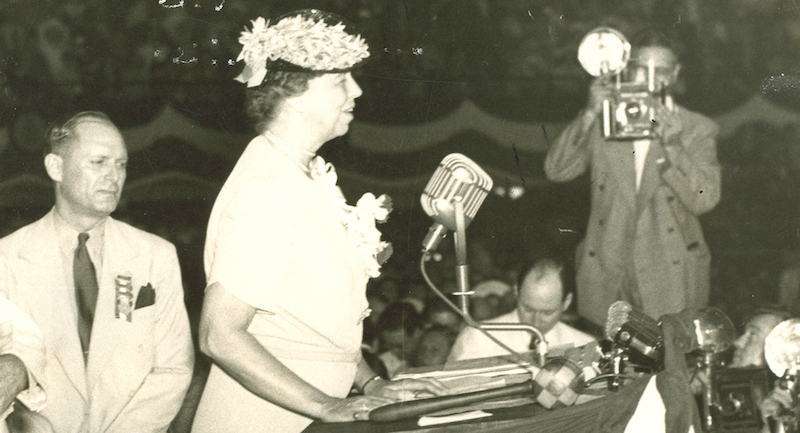
Photo: https://lithub.com/ -
Eleanor resigned her membership in the Daughters of the American Revolution (DAR) in 1939 and made arrangements to hold the concert at the nearby Lincoln Memorial; the event turned into a massive outdoor celebration attended by 75,000 people. Marian Anderson was an African American opera singer who was denied permission to perform in Constitution Hall. When municipal authorities in Alabama insisted that attendees at a public meeting be seated according to race on another occasion, Eleanor brought a foldable chair to every meeting and carefully positioned it in the middle aisle.
When he arrived, Roosevelt sat next to an African American friend, disobeying the area that was supposed to be for white people exclusively. Roosevelt requested a ruler after learning that Birmingham's segregationist laws forbade whites and Blacks from sitting together at public events. Then she said, "Now measure the distance between this chair and that one." Roosevelt positioned her chair evenly spaced between the white and Black attendance' sections after assessing the chasm between them. One witness said, "They were frightened to take her into custody." Her advocacy for the rights of African Americans, young people, and the impoverished helped to reintegrate previously excluded groups into politics.
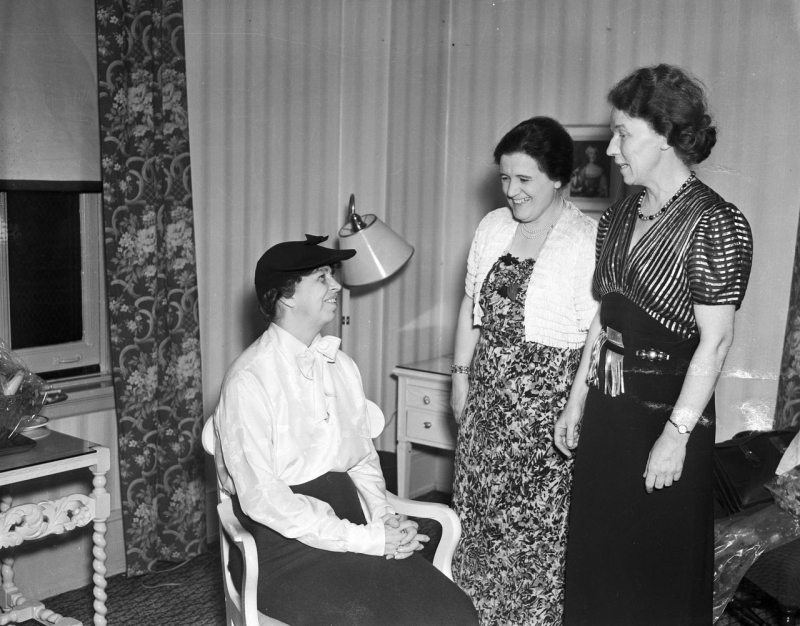
Photo: https://www.al.com/ 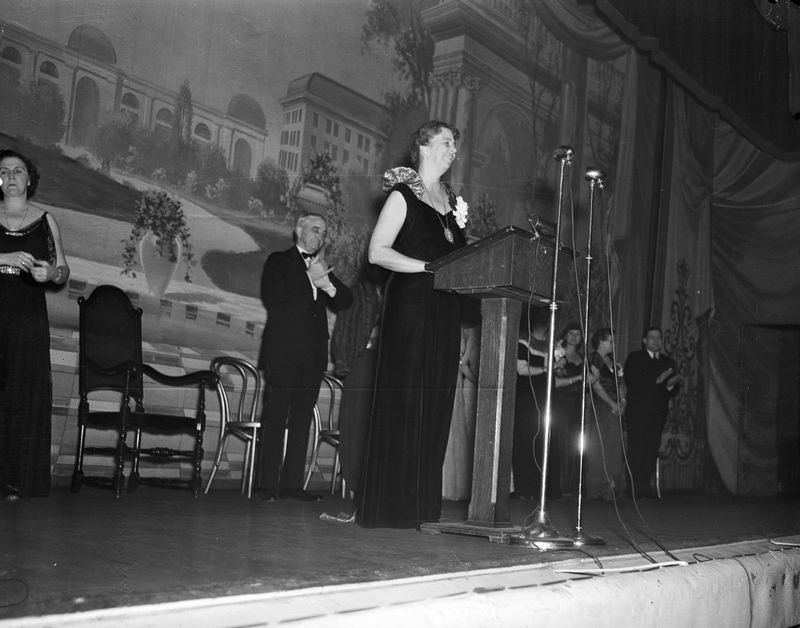
Photo: https://www.al.com/ -
President Harry S. Truman appointed Eleanor as a representative to the United Nations (UN) after President Roosevelt passed away in 1945. She served as chairman of the Commission on Human Rights (1946–51) and was a key contributor to the creation and adoption of the Universal Declaration of Human Rights (1948), which is one of the most interesting facts about Eleanor Roosevelt. As a result of her work in this capacity, more than 50 member states finally collaborated to create the U.N. Declaration of Human Rights. She continued to participate actively in the Democratic Party throughout the last ten years of her life, trying to elect Democratic presidential contender Adlai Stevenson in 1952 and 1956.
She was named the chair of President John F. Kennedy's Commission on the Status of Women in 1961, and she held that position up until a few months before her passing. She had opposed the Equal Rights Amendment (ERA) at first, claiming that it would take away the vital protective laws that women had battled to win and still required. However, she eventually came around.
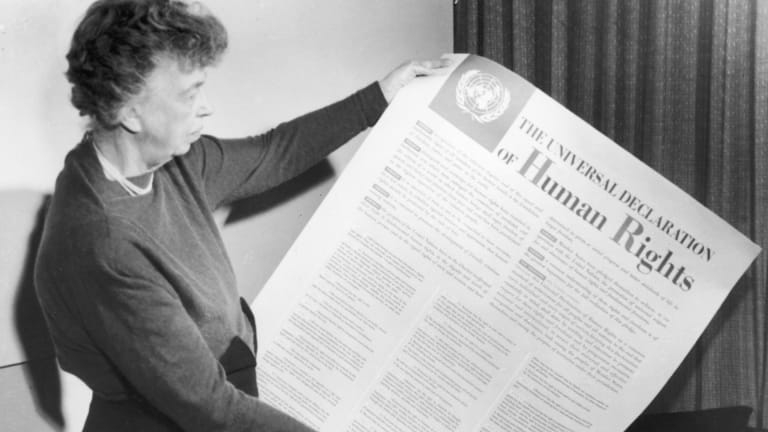
Photo: https://www.history.com/ 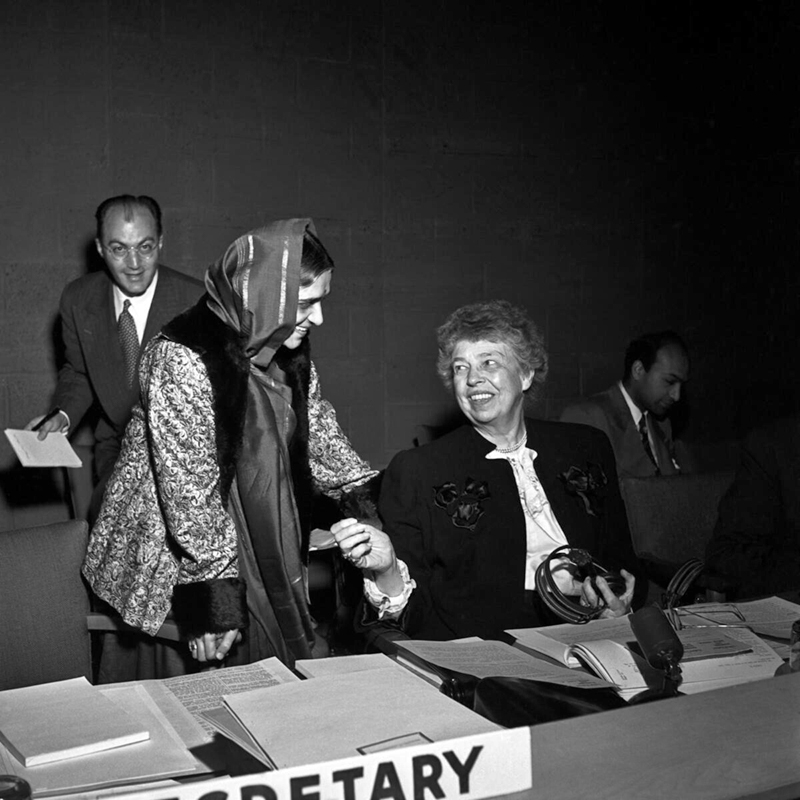
Photo: https://www.un.org/ -
Eleanor became almost as divisive a figure as her husband during the 12 years she served as the first lady due to the unparalleled range of her activities and her support for liberal causes. Forcing wire agencies that had not previously employed women to do so to have a representative present in case critical news broke, she established regular White House press conferences for female correspondents. She undertook extensive tours of the country and reported to the president on situations, initiatives, and public sentiment in consideration of the president's illness. Her opponents criticized her for these odd outings and made "Eleanor jokes," but many others were moved by her genuine concern for their well-being.
She started writing "My Day", a daily syndicated newspaper column, in 1936. From December 1935 until her passing in 1962, Eleanor authored a syndicated piece called "My Day" six days a week. She kept a public diary in the column. She utilized it to teach her audience, as a political instrument, and as a means of spreading liberal morality. She was a popular speaker at political gatherings and numerous institutions, and she had a passion for issues like equal rights for women and racial minorities, housing reform, and child welfare.
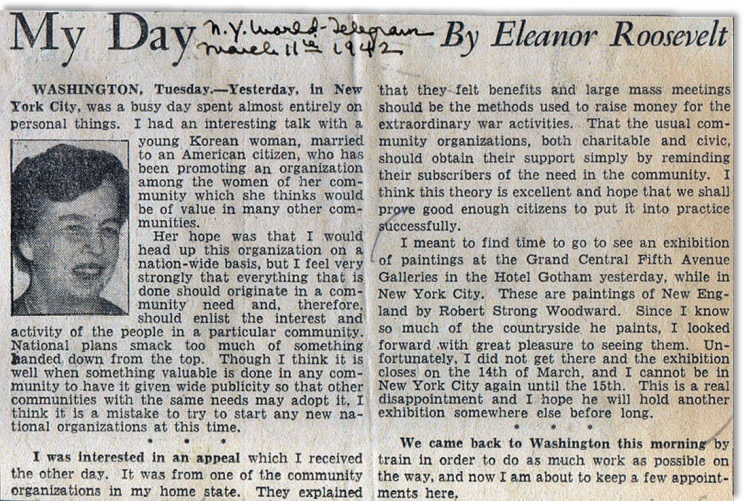
Photo: http://www.robertstrongwoodward.com/ 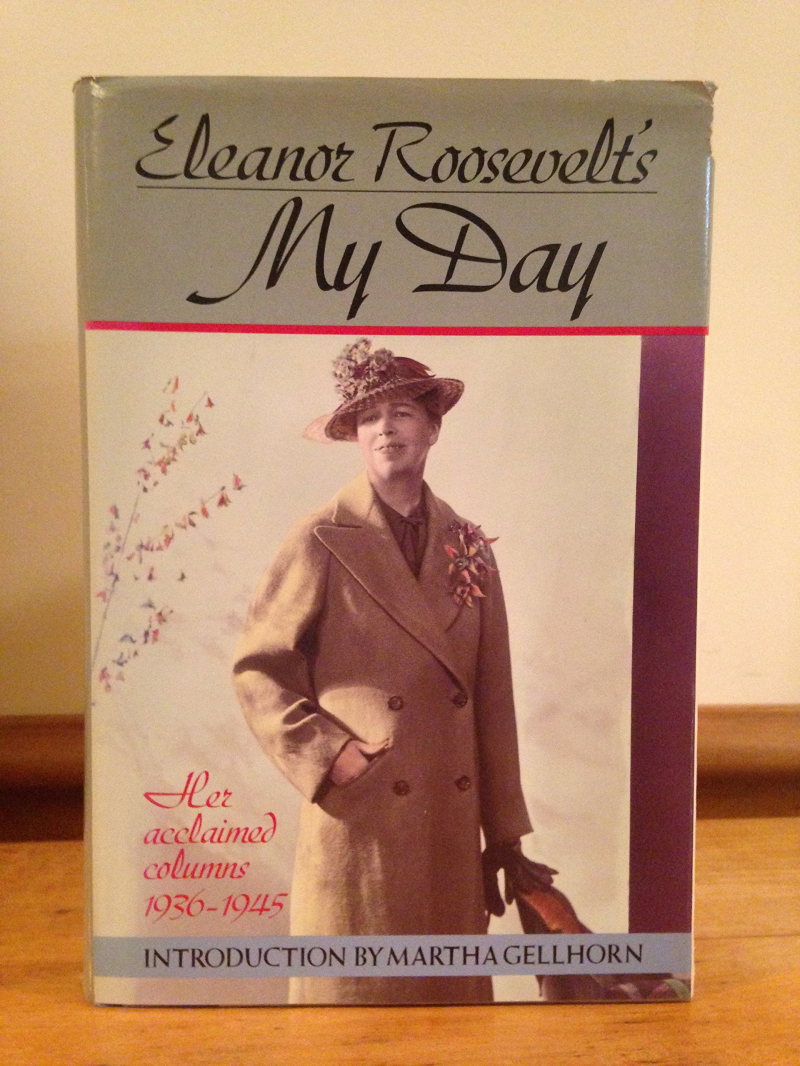
Photo: https://www.amazon.com/ -
Mrs. Roosevelt's life was busier than ever after she departed the White House in 1945. She remained a significant player in the Democratic Party. A tireless traveler, Roosevelt visited dozens of nations throughout his multiple trips across the world and had meetings with the majority of the world's leaders. She advocated for organized labor, delivered speeches and lectures in front of large crowds, and supported several causes including women's rights, minority rights, child welfare, and the rights of displaced people. Just a few weeks before she passed away, the final of her "My Day" columns appeared. She continued to write books and articles.
Aplastic anemia, TB, and heart failure caused Eleanor's death in New York City on November 7, 1962. Age-wise, she was 78. She is interred in Hyde Park, the Hudson River residence of her husband's family and the location of the Franklin D. Roosevelt Library. In many respects, it was also her library because she had established such a significant legacy as first lady, one that would serve as the standard for all of her successors. This story is also considered one of the most interesting facts about Eleanor Roosevelt.
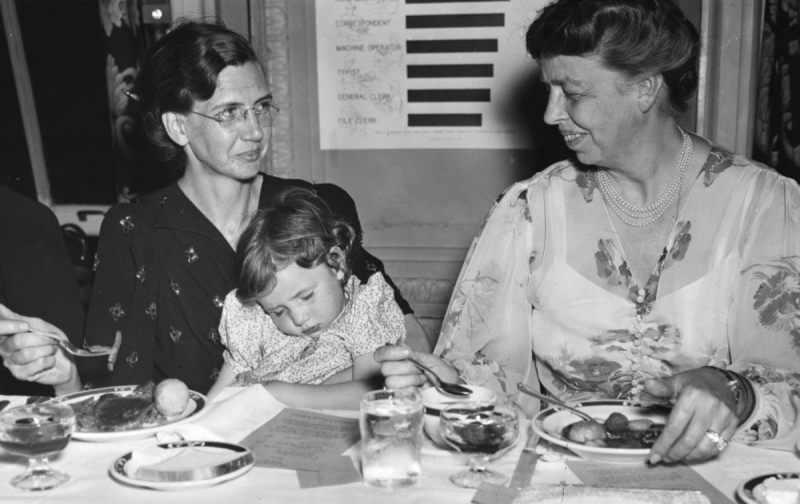
Photo: https://www.history.com/ 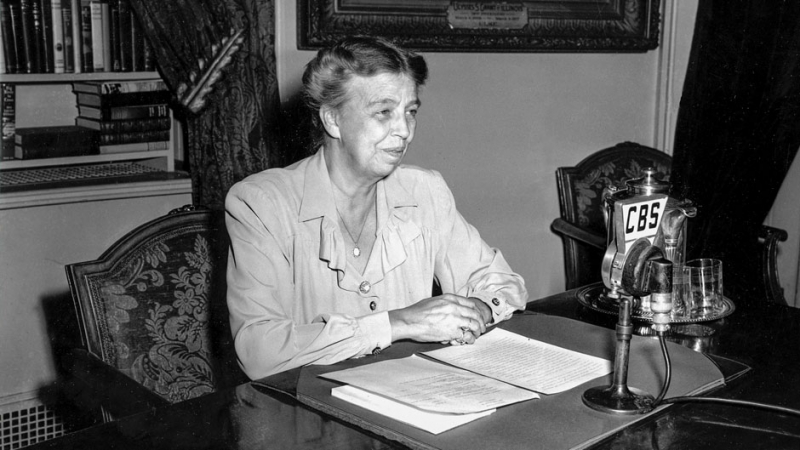
Photo: https://news.miami.edu/












